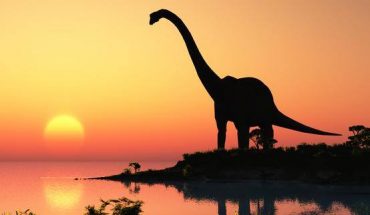Human beings have always dreamed of immortality. Scientists seek to understand more precisely the mechanisms of aging, studying the human body with unprecedented precision. They are also trying to find out why some animals live so long, trying to unravel their mysteries and hope to use this knowledge to extend the human lifespan, which is already entirely satisfactory. Top 10 longest-living animals Here is the list of 10 animals identified as having the essential longevity.
Contents
1- The Jellyfish (Turritopsis nutricula)
The jellyfish is the all-around champion animal. This jellyfish approaches immortality because not only does it renew its cells, as other jellyfish do, but it can revert to a state before its sexual maturity, thereby operating a rejuvenating mechanism. This mechanism is triggered under living conditions deemed unfavorable, such as stress or lack of food.
The fact remains that the animal can still die either from diseases or from attacks by its predators.
2- The sponge (Anoxycalyx Roubini)
The sponge, which is not an animal but a colony of cells living together, could live over 10,000 years. Each individual only lives ten years, but the settlement renews itself, with some cells being born while others die.
3 – Icelandic grass (Arctica islandica)
The lifespan of Icelandic grass is much more modest. Researchers have studied specimens of this species of bivalve mollusks collected from the Icelandic coast and estimated their age at 500 years. The seashell was named Ming, after the ruling dynasty in China when the seashell was born.
However, the half-millennium may not be the maximum age that the animal could reach since the seashell died from tests without the researchers knowing how long it could have lived.
4 – The Greenland shark (Somniosus microcephalus)
The Greenland shark is one of the largest carnivorous sharks on the planet. Evolving between 200 and 400 meters deep, it isn’t easy to observe. The age assessment is based on a study showing that this shark grows 0.5 to 1 cm per year. Its age can be deduced by extrapolation from its length.
This animal can therefore reach 200 years, and perhaps even 500 years. The Greenland shark is probably the longest-lived vertebrate animal.
5- Bowhead whale (Balaena mysticetus)
The bowhead whale, also known as the Greenland whale, can live up to 200 years. Interesting animal since it is the mammal with the most extended lifespan, the researchers wondered about the paradox that it represents: having a thousand times more cells than humans, it should suffer more from cancer and have a limited lifespan.
However, in its genome, they have identified mechanisms for putting specific genes on hold, limiting cell aging, or even DNA repair, which could serve as a basis for developing new therapeutic models in humans.
6- The giant tortoise of the Galapagos
The Galapagos giant tortoise, which forms a complex species in the genus Chelonoidis, is a land tortoise that could live up to 200 years. However, in captivity, the animal’s lifespan is limited to about ten years. The tortoise known as the oldest was named Harriet. A female was brought to a zoo in Queensland, Australia; she died in 2006 at 176.
7- The giant red sea urchin (Strongylocentrotus franciscanus or Mesocentrotus franciscanus)
The giant red sea urchin is native to the Pacific. Known as the largest species of sea urchins (a diameter of 20 cm plus spines of 8 cm), this animal could live up to 200 years, but that’s without counting the sea otter, a formidable predator capable of detaching and open up to larger specimens.
8- Geoduck clam or royal clam (Panopea generosa)
Another marine bivalve mollusk known for its longevity is the geoduck clam. Far from the Icelandic grass, the oldest known specimen was 160 years old. Scientists explain its longevity by its low activity.
9- Orange roughy (Hoplostethus atlanticus)

The orange roughy is a fish species living between 900 and 1800 m deep, with 150 years. Renowned for the taste qualities of its flesh, this fish is eaten. But since it accumulates large amounts of mercury in its tissues due to its long lifespan, it is best to limit its consumption.
10- A lobster (Homarus Gammarus or Homarus americanus)
A lobster in the United States in 2006 would have been 140 years old. This animal could regenerate limbs torn off by predators that do not.




